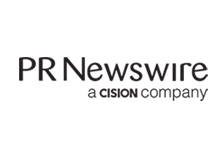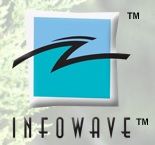Cell Culture Market size is set to grow by USD 24.8 billion from 2024-2028, Increase in infectious diseases boost the market, AI Role and Impact, Technavio
NEW YORK, Aug. 22, 2024 /PRNewswire/ -- The global cell culture market size is estimated to grow by USD 24.8 billion from 2024-2028, according to Technavio. The market is estimated to grow at a CAGR of almost 13.64% during the forecast period. Increase in infectious diseases is driving market growth, with a trend towards increasing demand for 3D cell culture. However, contamination of cell culture poses a challenge. Key market players include Agilent Technologies Inc., Avantor Inc., Becton Dickinson and Co., Bio Techne Corp., CLS Cell Lines Service GmbH, Corning Inc., Danaher Corp., Eppendorf SE, FUJIFILM Holdings Corp., General Electric Co., InvivoGen Corp., LABGENE Scientific SA, Lonza Group Ltd., Merck KGaA, Miltenyi Biotec B.V. And Co. KG, PromoCell GmbH, Sartorius AG, Sartorius CellGenix GmbH, Thermo Fisher Scientific Inc., and ZenBio Inc..
Get a detailed analysis on regions, market segments, customer landscape, and companies- View the snapshot of this report
Cell Culture Market Scope
Report Coverage
Details
Base year 2023
Historic period
2018 - 2022
Forecast period
2024-2028
Growth momentum & CAGR Accelerate at a CAGR of 13.64%
Market growth 2024-2028
USD 24.8 billion
Market structure
Fragmented
YoY growth 2022-2023 (%) 11.55
Regional analysis
North America, Europe, Asia, and Rest of World (ROW)
Performing market contribution North America at 37%
Key countries
US, China, UK, Germany, and Japan
Key companies profiled Agilent Technologies Inc., Avantor Inc., Becton Dickinson and Co., Bio Techne Corp., CLS Cell Lines
Service GmbH, Corning Inc., Danaher Corp., Eppendorf SE, FUJIFILM Holdings Corp., General Electric Co.,
InvivoGen Corp., LABGENE Scientific SA, Lonza Group Ltd., Merck KGaA, Miltenyi Biotec B.V. And Co. KG,
PromoCell GmbH, Sartorius AG, Sartorius CellGenix GmbH, Thermo Fisher Scientific Inc., and ZenBio Inc.
Market Driver
The 3D cell culture market is experiencing significant growth due to the increasing adoption of this technology in various research fields. In 3D cell culture, biological cells are grown in an artifically created environment that closely resembles normal cell morphology. This process is particularly useful for studying stem cells, viral pathogenesis, and cancer research. Companies like Thermo Fisher Scientific and Merck KGaA provide advanced 3D culture products to meet the growing demand. Merck KGaA offers a 3D Collagen Culture Kit, which closely simulates the collagen-rich extracellular matrix of the tissue, enabling analysis of apoptosis, cell angiogenesis, proliferation, and tissue formation. Thermo Fisher Scientific's AlgiMatrix 3D Culture System is an animal-origin-free bioscaffold that supports 3D cell culture, resulting in cells closely related to normal morphology. Scientists are also exploring the potential of developing personalized treatment plans using 3D cell culture models. The advantages of 3D culture technologies are driving the development of new products and increasing demand in the market, making it a promising area for growth in the forecast period.
The Cell Culture Market is experiencing significant growth due to increasing trends in cell biology research, particularly in the areas of novel therapeutics for chronic diseases like cancer, cardiovascular ailments, autoimmune disorders, and neurological disorders. Single-use technologies are driving this growth, with companies like CellVovant and the University of Bristel leading the way. Seed funding and collaborations are also fueling innovation in this space. The Biotechnology industry is a key player in the Cell Culture Market, with biopharmaceutical sectors investing heavily in drug research activities, vaccine production, therapeutic proteins, and monoclonal antibodies. Regulatory requirements and healthcare markets are also major factors, with diagnostic laboratories and biopharmaceutical production facilities driving demand for plastic consumables. Microcarrier-based technologies are reducing cost and process development time, making cell culture more accessible to emerging countries. However, concerns over plastic waste and solid waste from single-use bioprocessing are emerging as challenges. The market is expected to continue growing, with trends in tissue engineering, drug screening, and viral vaccines leading the way. Key players in the market include biotechnology companies, diagnostic laboratories, and pharmaceutical companies. Capital investments in biopharmaceutical production are expected to increase, with regulatory requirements and healthcare markets driving demand for cell culture technologies. Overall, the Cell Culture Market is poised for continued growth in the coming years.
Explore a 360° Analysis of the Market: Unveil the Impact of AI. For complete insights- Request Sample!
Market Challenges
-- Cell culture is a process used to grow cells from plants or animals in
an artificial environment for various applications, including research,
pharmaceuticals, and food production. However, this process is
susceptible to contamination, which can lead to significant losses and
negatively impact productivity. Contamination can occur through chemical
and biological means. Chemical contamination can stem from adulterated
media, impure water, endotoxins, free radicals, plasticizers, and
residual detergents and disinfectants. Biological contamination can be
caused by bacteria, yeast, molds, viruses, mycoplasmas, protozoa,
invertebrates, and cross-contamination from other cell lines. Molds,
yeast, and bacteria are ubiquitous and can easily contaminate cell
culture. Virus contamination is challenging to detect due to their small
size. Contamination can result in substantial losses and hinder overall
production, leading to decreased market revenue. To mitigate
contamination risks, lab professionals must monitor medium consistency
and discard any with floating material or altered color. Strict
adherence to aseptic techniques is essential to minimize contamination
chances. Failure to comply with these practices can result in the loss
of valuable sources and time, ultimately affecting market growth during
the forecast period.
-- The Cell Therapy Market is experiencing significant growth, particularly
in the Biopharmaceutical sectors focused on Cardiovascular Disorders.
Microcarrier-based technologies are driving innovation, with Emerging
Countries emerging as key players. Regulatory Requirements remain a
challenge, but Biotechnology Companies and Diagnostic Laboratories are
collaborating to meet them. Cost Reduction is a major focus, with
Single-Use Bioprocessing and High-Throughput Screening reducing Process
Development Time and Capital Investments. Plastic Consumables, however,
pose environmental concerns due to Waste Generation. The Market
encompasses various applications, including Drug Research Activities,
Vaccine Production, Antibiotics, Diagnostics, Tissue Engineering,
Monoclonal Antibodies, and Therapeutic Proteins. Key players include
Merck, Captivate Bio, and various Biopharmaceutical Development
companies. Market segments include Cell Culture Media, Consumables, and
Bioreactors. Emerging trends include the development of Artificial
Organs, Functional Tissues, Organoids, Viral Vaccines, and Testing Kits.
Mergers and collaborations are shaping the Market landscape.
For more insights on driver and challenges - Request a sample report!
Segment Overview
This cell culture market report extensively covers market segmentation by
1. Product
-- 1.1 Consumables
-- 1.2 Equipment
2. End-user
-- 2.1 Pharma and biotech companies
-- 2.2 Hospitals
-- 2.3 Research and academic Institutes
-- 2.4 Others
3. Geography
-- 3.1 North America
-- 3.2 Europe
-- 3.3 Asia
-- 3.4 Rest of World (ROW)
1.1 Consumables- The cell culture market is driven by the extensive usage and wide applicability of consumables, making it the largest revenue-generating segment. Consumables, including sera, media, and reagents, are essential for maintaining optimal cell growth conditions. Sera consist of adult bovine sera (ABS), fetal bovine sera (FBS), and other animal sera. Media encompasses serum-free media, stem cell media, specialty media, and classical media and salts. Reagents comprise supplements, growth factors, cell dissociation reagents, contamination detection kits, antibiotics, antimycotics, cell culture reagents, salt solutions, buffers, and other accessories. The high demand for cell culture-based products, such as Humulin for diabetes treatment, fuels the need for consumables. The increasing diabetic population is a significant factor driving market growth. Furthermore, vendors invest in R&D to develop advanced cell media, reagents, and supplements, such as FUJIFILM Irvine Scientific Inc.'s BalanCD Gal Supplement, which enhances galactosylation in biotherapeutic development. These advancements will contribute to the expansion of the consumables segment in the global cell culture market during the forecast period. The affordability of consumables, which are often sold with compatible instruments at lower prices than when bought separately, is another crucial factor driving market growth. The expanding cell-based research and the rising demand for cell-based therapies are expected to boost the market further.
For more information on market segmentation with geographical analysis including forecast (2024-2028) and historic data (2017-2021) - Download a Sample Report
Research Analysis
The Cell Culture Market is experiencing significant growth due to the increasing demand for advanced cell-based research and therapeutic applications. Buying behavior in this market is driven by the need for single-use technologies, which ensure sterility and reduce contamination risks. Novel therapeutics, particularly those targeting chronic diseases like cancer, cardiovascular ailments, autoimmune disorders, and neurological disorders, are fueling market expansion. The biotechnology industry and pharmaceutical companies are investing heavily in cell culture for biopharmaceutical development, viral vaccine production, and testing kits. Cell culture tools, organoids, high-throughput screening, bioreactors, and Captivate Bio's advanced cell culture platforms are transforming research in cell biology and biotechnology. University of Bristol and other research institutions are also contributing to market growth through seed funding and collaborations.
Market Research Overview
The Cell Culture Market is a significant segment of the biotechnology industry, driven by the increasing demand for novel therapeutics, particularly in the areas of chronic diseases such as cancer, cardiovascular ailments, autoimmune disorders, and neurological disorders. Single-use technologies have revolutionized cell culture processes, reducing cost and process development time, and increasing efficiency in biopharmaceutical production. The market is also witnessing collaborations between universities, biotech companies, and diagnostic laboratories to advance cell biology research and develop new therapies. Regulatory requirements and healthcare markets are key drivers, with drug research activities in pharmaceutical and biotechnology sectors focusing on monoclonal antibodies, therapeutic proteins, vaccines, and antibiotics. The market includes plastic consumables, microcarrier-based technologies, and bioreactors, with companies like Merck investing in biopharmaceutical development and Captivate Bio focusing on organoids and functional tissues. The market also includes high-throughput screening, diagnostics, and cell culture tools, with emerging countries and the biopharmaceutical sectors driving growth. However, concerns around plastic waste and solid waste generation in cell culture processes are emerging as challenges.
Table of Contents:
1 Executive Summary
2 Market Landscape
3 Market Sizing
4 Historic Market Size
5 Five Forces Analysis
6 Market Segmentation
-- Product
-- Consumables
-- Equipment
-- End-user
-- Pharma And Biotech Companies
-- Hospitals
-- Research And Academic Institutes
-- Others
-- Geography
-- North America
-- Europe
-- Asia
-- Rest Of World (ROW)
7 Customer Landscape
8 Geographic Landscape
9 Drivers, Challenges, and Trends
10 Company Landscape
11 Company Analysis
12 Appendix
About Technavio
Technavio is a leading global technology research and advisory company. Their research and analysis focuses on emerging market trends and provides actionable insights to help businesses identify market opportunities and develop effective strategies to optimize their market positions.
With over 500 specialized analysts, Technavio's report library consists of more than 17,000 reports and counting, covering 800 technologies, spanning across 50 countries. Their client base consists of enterprises of all sizes, including more than 100 Fortune 500 companies. This growing client base relies on Technavio's comprehensive coverage, extensive research, and actionable market insights to identify opportunities in existing and potential markets and assess their competitive positions within changing market scenarios.
Contacts
Technavio Research
Jesse Maida
Media & Marketing Executive
US: +1 844 364 1100
UK: +44 203 893 3200
Email: media@technavio.com
Website: www.technavio.com/
View original content to download multimedia:https://www.prnewswire.com/news-releases/cell-culture-market-size-is-set-to-grow-by-usd-24-8-billion-from-2024-2028--increase-in-infectious-diseases-boost-the-market-ai-role-and-impact-technavio-302227522.html
SOURCE Technavio




